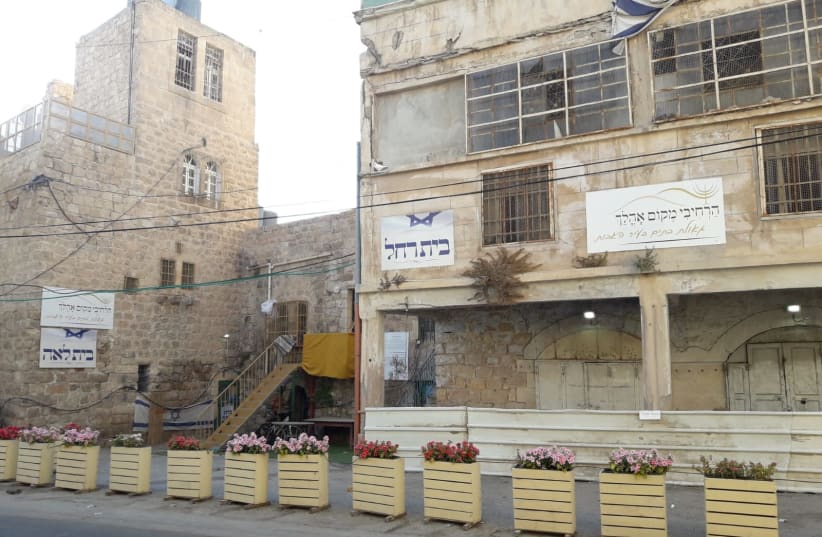Jews may remain in two Hebron buildings called Beit Rachel and Beit Leah until legal proceedings regarding the two structures have been completed, the High Court of Justice ruled on Sunday.
The stone buildings are located on Shuhadah Street, close to the Tomb of the Patriarchs. Jews moved into the structures in 2018, but the Civil Administration has yet to accept their proof of purchase from the Palestinian family Za’tari.
According to the court, one of the family members named Yousef began to transfer rights to the properties to the Jewish Land Redemption Fund Association in 2008.
Eight years later, in January 2016, Jewish residents of Hebron entered the building. The Za’tari family filed a police complaint, arguing that it had never sold its rights to the properties. The IDF removed the families.
In March 2018 just before Passover, the families moved back in after the Civil Administration gave its initial determination that the fund had legally purchased the property.
The Za’tari family then turned to the police. When they failed to respond, the family sought help from the Defense Ministry, which also took no action on the matter.
In June last year, the family turned to the High Court with the help of attorney Samar Shehadeh. He argued that the police and the IDF should have evacuated the buildings and returned them to the status quo. He explained to the court that while the Civil Administration had authorized the purchase, the property had not yet been registered, and the bureaucratic process of transferring ownership had not been completed.
The state argued to the court that there was no clear evidence showing the Za’tari family had possession of the property when the Hebron Jews moved in. In light of the evidence presented, an evacuation would have only served to help one of the parties in the dispute, the state argued.
It further said that the Za’tari family had the right to appeal to the Civil Administration’s First Registration Committee, which could issue an injunction regarding the property.
After hearing from both sides, the court agreed with the state’s position that the Jewish residents of the homes should not be evacuated at this time.
The two structures are located in the H2 area of Hebron under Israeli military control.
